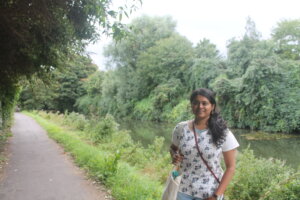Clinical management of snakebite starts with understanding the patients point of view
My journey with snakebite victims began with my MD dissertation where I explored the question of adrenal hormone deficiency after Russell’s viper bites in Southern India. Not only was I intrigued by how each envenoming played out like a new episode in a thriller drama where the difference in the amount and nature of venom, the circumstances of the bite, along with each patient’s organ-systems’ unique response meant drastically different outcomes for patients.
 Moreover, for the first time in my clinical training, I was working closely with victims and their families which made me see things from their point of view. The stories of how life could go drastically from normal to darkness in terms of loss of life and livelihood within a matter of days after a snakebite came as a rude shock. I have since tried to retain this lesson by balancing the science with human aspects of snakebite in my professional journey.
Moreover, for the first time in my clinical training, I was working closely with victims and their families which made me see things from their point of view. The stories of how life could go drastically from normal to darkness in terms of loss of life and livelihood within a matter of days after a snakebite came as a rude shock. I have since tried to retain this lesson by balancing the science with human aspects of snakebite in my professional journey.
As a clinical researcher and medical teacher who is passionate about making a difference in the lives of snakebite victims, I believe in going all out to confront the problem with a multipronged approach. One of the first clinical questions which I worked on was to attempt to predict how patients would respond to a bite? Could we by some means reduce the uncertainty and predict who would do well and who would have a fatal outcome after a Russell’s viper bite? This led me along with my team, to evolve and validate a simple bedside scoring system which doctors could use at rural centres to decide which patients need to be referred to bigger hospitals and who could be managed with minimal support at primary care. This work is currently in its final stages.
The stories of how life could go drastically from normal to darkness in terms of loss of life and livelihood within a matter of days after a snakebite came as a rude shock.
At my current place of work in Rajasthan, India one of the clinical problems we face is when the Indian polyvalent antivenom (which uses venom from snakes from Southern India) does not work well in saw-scaled viper bites from the desert region. This means that victims who reach the hospital in time and receive antivenom still don’t recover well and have prolonged bleeding for days after the bite.
We are approaching this issue in multiple ways, on priority is exploring optimal clinical support for these patients and advocating for regional antivenoms. Digging deeper is to try to understand how the snakes in our region are different from rest of India. For this, I am collaborating with zoologists, and basic scientists to look at the snake ecology and behaviour in Rajasthan. Other challenges our team are currently engaged in resolving include improving clinical care for acute snakebite victims especially during the COVID-19 crisis and long-term care of snakebite survivors.
In my role as an educator, I’m keenly interested in exploring how and why snakebite victims face “neglect” especially from the health care systems. I have received the Medical Education in Resource Constrained Settings grant this year from the Association for Medical Education in Europe for exploring these aspects of empathy and neglect for NTDs like snakebites in medical students using a mixed methods study. My aim with this work is to see if we there are methods which we can use to sensitise and prepare future doctors to make better decisions and act with empathy when they are for snakebite victims. I strongly believe that it is crucial to have research to generate evidence-based answers for these difficult and uncomfortable questions which do not usually get limelight in hard science. I trust that this will lead to effective ways to address humanitarian aspects of snakebite which are likely to make the most difference and translate into huge gains for the people who are neglected.
I am also closely involved in advocacy efforts and work with civil societies for supporting community education efforts. I am confident a cooperative and collaborative efforts from scientists, clinicians, activists, and social scientists engaged in snakebite work can definitely #EndTheNeglect.
